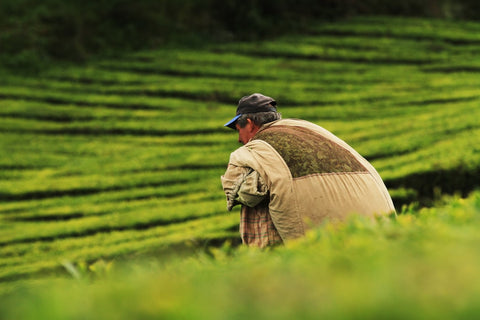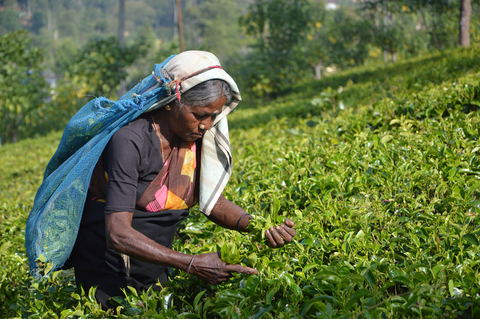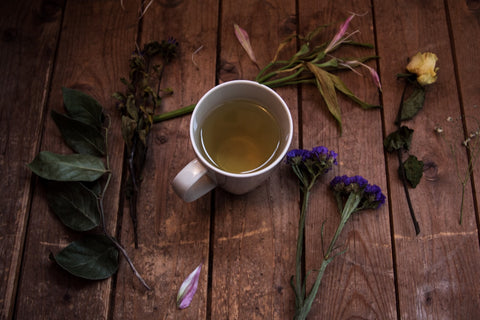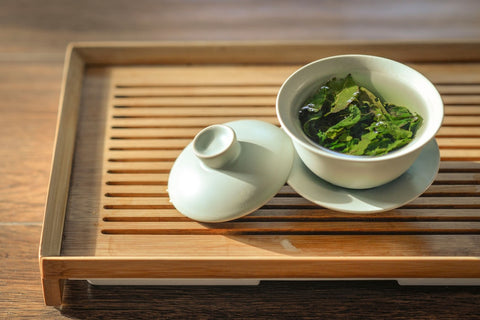The Difference Between Green Tea Powder and Matcha
Even if you don’t drink tea, you’ve probably heard about green tea and matcha. In some cases, you’ve probably used it too. In recent years, both have gained popularity not only as versatile, immuno-boosting beverages but also as potent skincare ingredients. However, despite their popularity, a lot of people are still clueless as to the exact difference between both. And it’s quite easy to confuse one with the other, probably because they both come from the same plant.
Green tea powder and matcha powder are all extracted from the Camellia sinensis plant.That and the fact that they are good for you are the only things they have in common. Each type of tea powder is grown and cultivated in different ways resulting in a difference in texture, color, flavor, and purpose.
Cultivation

Green tea can be cultivated in various areas around the world such as Sri Lanka, Taiwan, India, and Japan. However, roughly 80% of the world’s green tea is produced in China.
Matcha, on the other hand, is mostly grown in Japan. The main regions that grow matcha are the Aichi and Kyoto prefectures. But the location of where they are cultivated isn’t the main reason why they’re different.
Tea leaves that are intended for making matcha will be shaded during the last month of cultivation. This process lowers the rate of photosynthesis while increasing the levels of L-theanine in the end product.
This isn’t the case with green tea. Tea leaves used to make green tea are left to grow where they are planted.
Processing

Once the plants reach maturity, tea leaves intended for green tea are pan-fired immediately after harvesting to stop it from further oxidation. Afterwards, the leaves are then cooled, rolled, and dried.
Matcha, on the other hand, goes through a more intricate process. Shaded tea leaves are often plucked during spring. Afterwards, they are steamed and air-dried. The leaves are then de-stemmed and de-veined before they are refrigerated. At this stage, the leaves are referred to as tencha. They are purposely stored to allow the flavor to develop. Matcha powder is produced by slowly grinding them with granite stones. This part of the process is done slowly to prevent the end product to turn brown.
As you may notice, the process to produce matcha takes longer which is partly the reason why it is priced higher compared to green tea.
Color

The difference in color can be seen upfront. Compared to green tea powder, matcha powder has a brighter, more vivid green color. This is because matcha contains a higher amount of chlorophyll. Standard green tea powder has an olive green color.
Texture

Their difference in texture is also as distinct as the difference in their color. Green tea feels a bit grittier compared to the velvety fine powdered matcha.
Taste

There’s also a difference between how the two types of tea powder taste like, which is basically the reason why both serve different purposes and applications. Traditional green tea tastes mild and slightly bitter. Matcha on the other hand, possesses sweet, almost vegetal undertones. However, the taste can vary depending on the grade of matcha used. It can range from ceremonial to culinary, with ceremonial being the highest grade and culinary the lowest. Because older tea leaves are used to make culinary grade matcha, it tends to be a little more bitter.
Nutrition

Green tea is known to have a number of health benefits. It’s loaded with antioxidants that help fight disease-causing free radicals. It’s also said to enhance metabolism and increase alertness and focus. Matcha’s benefits are similar. However, the main difference is in the potency. Both are beneficial to your body when taken regularly but due to the difference in processing, matcha is able to retain more antioxidants compared to green tea. Matcha contains more catechins, tannins, and L-theanine compared to green tea.
The Bottomline
It’s easy to understand why both matcha and green tea are increasing in popularity worldwide. They both taste delicious and are actually good for you. Whichever you want more is just a matter of preference. They’re also quite easy to prepare and can be enjoyed in a variety of ways.
References:
https://www.nourishedlife.com.au/article/154906/difference-between-matcha-green-tea.html
https://worldteanews.com/tea-business-resources/not-all-powdered-green-tea-is-matcha
https://epicmatcha.com/matcha-tea-powder-vs-green-tea-whats-the-difference/
